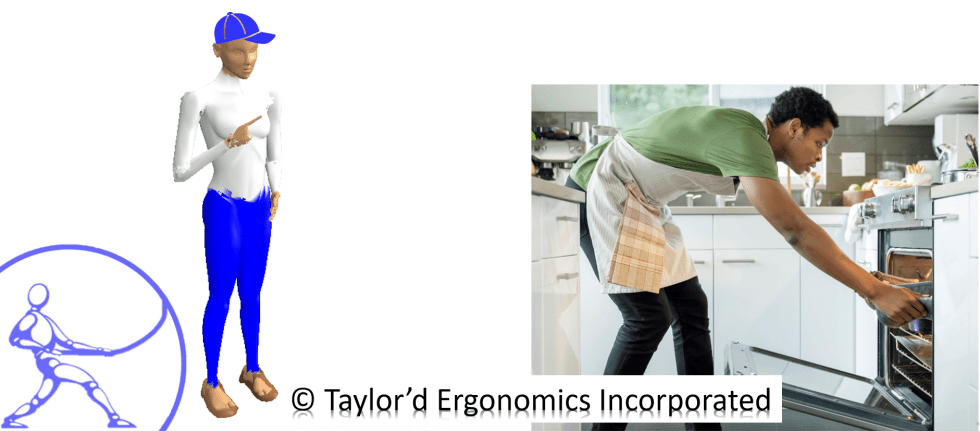Some of our clients pass their strain/sprain injury reports to our ergonomists for review, investigation, or other support. I have to say, every time I see the corrective action listed as “Reinstruct the worker,” I wince quietly. I imagine the supervisor sitting with the worker, who is in pain, and saying, “Next time, make sure you bend your knees. I just don’t know what else to tell you.”
As a supervisor, it’s tough to identify a corrective action for a hazard that has been present for decades. It must frustrate the supervisor to report the same injuries, over and over, with no idea how to fix the job.
“Reinstructing the worker” is essentially saying that, if the task had been performed correctly, the worker wouldn’t have been injured. Is this ever the case? Certainly. If I purposely stick my arm past a guard and it gets burned, I should be “reinstructed”. If I try to carry all of my groceries into the house in one trip and I slip on the stairs, I should be “reinstructed”. If I bend my back to lift a turkey out of the oven because the oven is low and the oven door is in the way, reinstruction to bend my knees probably won’t help me.
By and large, people get injured because the demands of the job exceed their capabilities. Most people seek out the best way to do the job, by following the training that they were provided, or by experimenting to find the easiest way.
When does “reinstruct the worker” help?
When experienced or previously injured or particularly small workers perform a job in a different way from novice workers, we can often learn about “tricks of the trade” that can make a job easier. (Not always “easy” or even “safe”, but easier than the novice method.) At Taylor’d Ergo, we call these “best practices” or “ergonomic work strategies” but they are also called “ergonomic techniques”, or “work hacks”. A “best practice” offers a biomechanical or physiological advantage. For example, some workers may lift luggage onto the top of a dolly by holding the handle while pushing upward using the thigh; we would call this “diverting the load”. Looking for these types of tricks, and then checking that they truly do reduce the biomechanical load, is the first step in developing practical ergonomics training.
There is a growing body of research that supports that this type of training can be effective at mitigating risk. (No, not as effective as fixing the job, but still helpful when no fix is yet possible. Sometimes, even using the best possible technique will not protect workers from injury. Some things are just too heavy and awkward, even for the most experienced worker.)
-
- In 2014, Arial, Benoit, and Wild published a paper that showed that ambulance professionals who reported the use of “strategies and tricks of the trade” reported fewer back injuries. (Applied Ergonomics 45 [2014] 1003-1009)
-
- In 2020, Denadai and associates showed that poultry processing workers experienced significantly less discomfort after they were provided with training on knife use and avoiding awkward postures. They also found that more experienced workers had more diverse ways of performing their tasks. (Applied Ergonomics 90 [2020] 103234)
-
- A widely-referenced article by Goggins et al. in 2008, used to help cost-justify interventions, summarized the effectiveness of control measures reported in 250 published case studies. Goggins reported that “training” interventions that rely on behaviour changes are 10-20% effective at reducing injury risk. This is considerably lower than changes in job design and engineering solutions. However, a 10-20% reduction in injury risk, in some industries where engineering controls are not currently possible, would still be welcome. (Journal of Safety Research 39 [2008] 339–344)
Our ergonomists are trained to look for, analyse, and document these practices, so if you’re trying to find truly value-added “reinstruction” for your workers, we can help. Benefits:
-
- These “best practices” are useful for highly variable jobs like custodial work, outdoor work, or health care, where engineering controls may not yet be practical.
-
- Best practice studies use a participatory approach, involving workers and “harvesting” their skills so they can be shared. The techniques are not being imposed by an “expert”, but generated through worker input.
-
- The reports become a valuable knowledge transfer tool, particularly for novice workers, and perhaps even for workers who need “reinstruction” following an injury.
-
- They offer task-specific guidance, rather than broad, often impractical advice such as “bend your knees” or “use a two-person lift”.
-
- Best practice reports translate nicely into coaching plans, providing supervisors, safety professionals, or JHSC members with tools to help workers use better work practices.
We know this approach won’t eliminate MSD hazards, but it can be a small but useful tool in the prevention toolbox.
- Best practice reports translate nicely into coaching plans, providing supervisors, safety professionals, or JHSC members with tools to help workers use better work practices.


